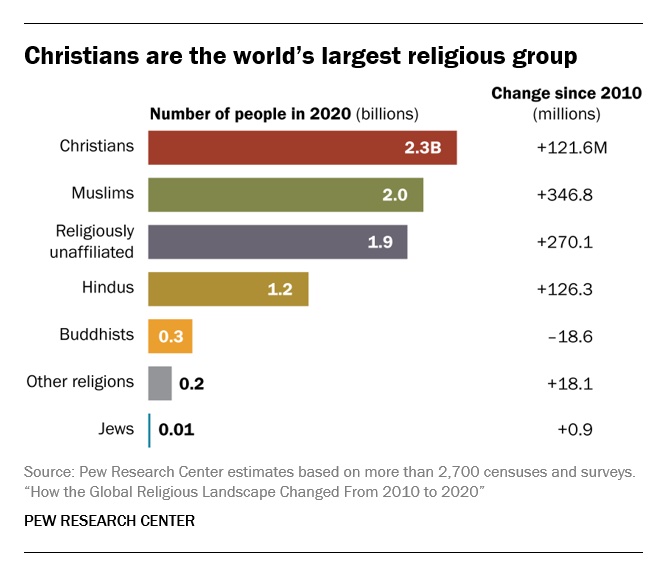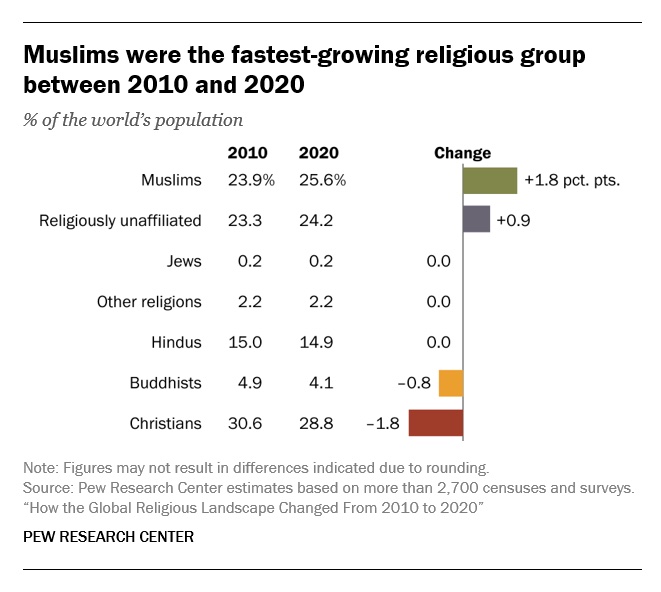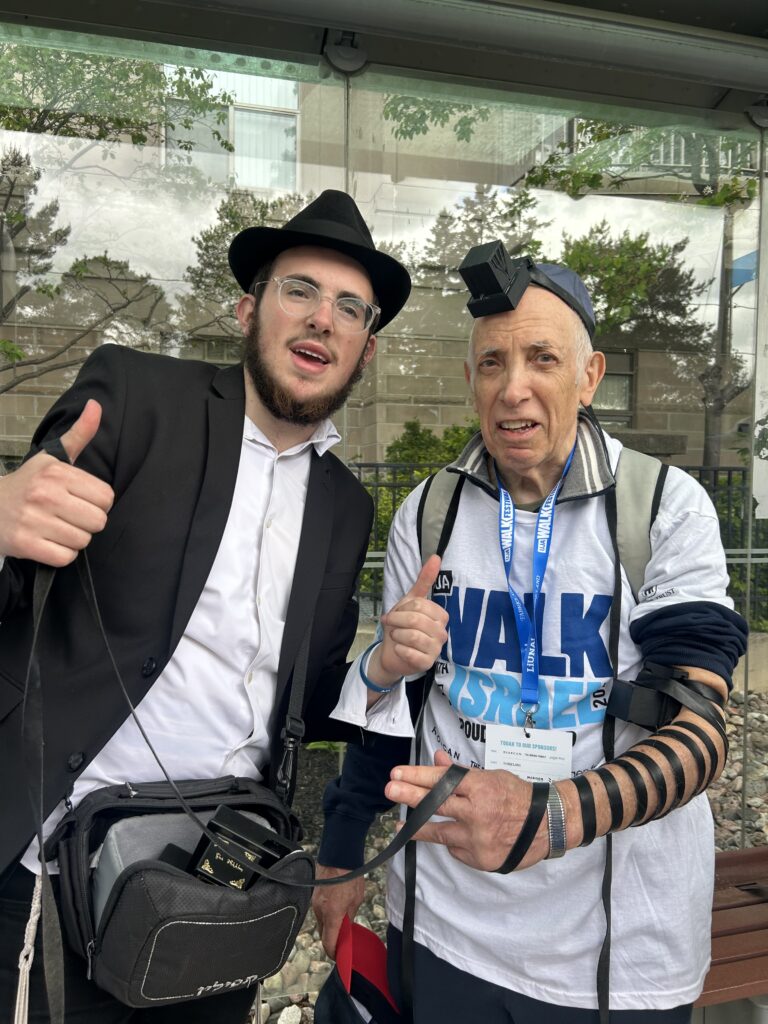Uncategorized
How this Brooklyn neighborhood became the ‘Klezmer Shtetl’
(New York Jewish Week) — Some of the greatest talents in Jewish music have strolled Midwood’s lettered avenues, including the klezmer musician Pete Sokolow and the Hasidic composer Ben Zion Shenker. Both have left us — Sokolow in 2022, Shenker in 2016 — but the Modzitzer synagogue on Avenue L, where Shenker once lead prayers, is a spiritual home for klezmer virtuoso and Midwood denizen Andy Statman, 73. He’s davened (prayed) there for more than 30 years.
Now, a younger group of klezmer musicians joins Statman in making the quiet, south-central Brooklyn neighborhood their home, due to the (relatively) affordable rents, low density and greenery, as well as its proximity to Jewish communal life spread across the borough.
“We needed more room than Park Slope could provide on our budget,” Pete Rushefsky, who has played a hammered dulcimer known as the tsimbl in the city’s klezmer scene for more than 30 years, told the New York Jewish Week. “It’s been a great neighborhood to raise a family.” That’s especially true for a culturally active family: Rushefsky’s wife, Madeline Solomon, sings, plays accordion and runs the Brooklyn Workers Circle School in Park Slope; their 12-year-old daughter, Mathilda, plays in a children’s fiddle band in the neighborhood.
Midwood looms so large over the present-day Jewish music scene that there’s even a klezmer rock band named for it: Midwood, the band, was founded in 2015 by the fiddler Jake Shulman-Ment. The 39-year-old veteran klezmer violinist lives in the same apartment building on Ocean Avenue as Jeremiah Lockwood, a blues performer and a scholar of cantorial music.
“I call it the ‘Klezmer Shtetl,’” said Midwood’s vocalist, Eleonore Weill, who is also a multi-instrumentalist. (Weill used to reside in Midwood but now lives in next-door Ditmas Park, which is also home to Sarah Gordon, lead singer of the rock band Yiddish Princess. Nearby Kensington counts among its klezmer-making residents D. Zisl Slepovitch and the klezmer couple Ilya Shneyveys and Sarah Myerson.)
Another Midwood musician is Michael Winograd, 40, who many consider to be the best klezmer clarinetist of his generation. As a teenager, he went to Statman’s home for lessons; last summer he moved to the neighborhood.
Midwood musicians Jeremiah Lockwood, left, and Pete Rushefsky. (Courtesy)
Elsewhere in Midwood resides guitarist Yoshie Fruchter, founder of Pitom, which the Tzadik record label called “a shredding Jewish instrumental band.” Fruchter has performed with Jon Madof’s Zion80, which plays Shlomo Carlebach tunes in an Afrobeat style, and Mazal Tov Cocktail Party, the latest klezmer/dance music project led by David Krakauer and Kathleen Tagg.
“I didn’t choose Midwood, particularly,” Shulman-Ment told New York Jewish Week. “It sort of fell into my life.” The fiddler decided to rent his Midwood one-bedroom in the summer of 2021 while he was on tour in the Pacific Northwest. After seeing the place online and sending a couple of friends to check it out in person, Shulman-Ment signed a lease while he was still on the road.
As it happens, Lockwood — who lives with his two sons, ages 14 and 16, on the floor below Shulman-Ment — also rented his apartment sight unseen that same summer.
The two neighbors credit Ivona Hertz, co-owner of Ocean Empire Management, with helping them find a home. Her company manages a pair of buildings across from Prospect Park that are home to so many jazz musicians, they came to be known as “the jazz dorms.”
“When the tenants are happy they always recommend their friends,” Hertz said, describing how she came to rent Midwood apartments to so many musicians. “That’s how the ‘jazz dorms’ were created and that’s how the Midwood buildings are now getting more musicians. The apartments are larger, up to three bedrooms, including the square footage, and more affordable in Midwood.”
According to the available rentals on the real estate website StreetEasy, the median rent in Midwood is $2,566. (Hertz, the property manager known for helping musicians, says she typically charges between $1,500 and $1,750 a month for one-bedroom rentals.) The median sale price in the nabe for the first quarter of this year was $644,000, according to the real estate website PropertyShark — that’s substantially less than the Brooklyn borough-wide median of $755,000.
In addition to relatively low housing costs, Midwood is also known for being home to a very large — and mostly Orthodox — Jewish community. Traditionally Ashkenazi, the southern reaches of the neighborhood have also seen steady growth of its longtime Sephardic Jewish community. “Sephardic Jews dominate from [an area known as the] Avenue H cut to Avenue Z,” Sarina Roffe, CEO of the The Brooklyn Jewish Historical Initiative and president of the Sephardic Heritage Project, told the New York Jewish Week. “The Sephardic community in Brooklyn has been growing for more than 100 years.”
Most of these newer, klezmer residents identify as secular Jews, and not Orthodox. But many of them said they enjoy living among their Orthodox brethren. Clarinetist Winograd lives in part of Midwood that’s “very Jewish,” as he described it. “I kind of like being a secular Jew who gets to experience the benefit of a quiet Shabbes. I enjoy being a culturally-engaged Jew living in a Jewish neighborhood even if I’m not partaking in the more religious activities.”
Shulman-Ment — who identifies as a secular Jew who is committed to Jewish culture — spent a year living in Crown Heights, so he was familiar with the feeling of living in an Orthodox neighborhood and feeling like a bit of an outsider. He said he’s noticed, though, that if he’s in his “gig costume” — a suit and fedora — some of his Orthodox co-religionists offer a friendly greeting.
Lockwood described his (and Shulman-Ment’s) section of Midwood, along Ocean Avenue, as “rough-hewn and unlovely. It is a hard-working and threadbare place.” And yet, “I like it here fine,” he told the New York Jewish Week, adding: “I just don’t want to encourage out-of-towners to move in.”
Fruchter — who moved to Midwood last December with his wife, Jewish cookbook author Leah Koenig, and their two kids, aged 4 and 9 — said his area of Midwood has a lot of Pakistani residents, but on Saturday his family can often hear zemiros, hymns sung at the Sabbath table, coming from the homes of Orthodox neighbors down the block. “I really like how you see people from so many different places, cultures, religions and backgrounds all sharing the same sidewalks,” Fruchter told the New York Jewish Week via email. “I love walking by businesses with signs in different languages and restaurants where I have no idea what to order… I love that it’s a ‘quiet’ neighborhood but with a lot of bustle in it.”
Klezmer virtuoso Andy Statman, left, has lived in the neighborhood more than 30 years, while guitarist Yoshie Fruchter, right, is a more recent resident. (Courtesy)
The family is involved in the Flatbush Jewish Center, a Conservative egalitarian synagogue in the neighboring Kensington section of Brooklyn where Fruchter has served as cantor on the High Holy Days and organized a concert series.
Fruchter is also a member of Shulman-Ment’s band Midwood — whose recording of their live performance at the “Klezmer On Ice” festival in Minneapolis last winter will be released in the coming months. Midwood the band’s next gig is at the National Yiddish Book Center’s annual Yidstock festival in Amherst, Massachusetts on July 16.
Shulman-Ment will also be performing with the actor and musician Daniel Kahn on June 15 at the East Village world music venue Drom. The performance is timed to the release of the duo’s first album, “The Building & Other Songs,” which features Yiddish versions of songs by Leonard Cohen, Bruce Springsteen, Tom Waits and Woody Guthrie.
The other Midwood klezmer musicians with gigs to look forward to are Rushefsky — who is also the executive director of the Center for Traditional Music and Dance — and Statman, who will both be playing with the violinist Itzhak Perlman in the coming months.
In addition, Statman plays in two trios: The Andy Statman Trio, which has performed at the Greenwich Village Synagogue in Manhattan regularly for 20 years, and another with the Eddy Brothers, two young West Virginia bluegrass musicians. More recently, Statman started playing with a traditional bluegrass quartet that’s comprised of players he’s known since he was a teenager. That band is now known as Andy’s Ramble, not to be confused with the 1994 Statman album of the same name.
Statman grew up in Queens and was in his mid-20s when he first moved to Brooklyn in 1976. After a series of apartments, he and his wife Basha moved to Avenue L in Midwood in 1987, where they raised their four children. “Our kids needed to be here. We needed to be here,” Statman said. “There is sky and trees and grass here. There are birds chirping all over. The neighborhood was incredibly vibrant.”
When he first arrived, Statman took a break from his music career for a year to study Jewish holy texts full time. In the 35 years since, he’s seen real estate values soar to a level he calls “ridiculous.” Statman said that since the early 2000s, he’s watched kids who grew up on his block move to Lakewood, New Jersey or Monsey in Rockland County — both home to sizable Orthodox Jewish communities — because they couldn’t afford to buy homes in Midwood. Now their parents are leaving, he added, because they want to be near their grandchildren.
It’s a fate the clarinetist is personally familiar with: None of his four children, now grown, live in the area. With two daughters and their grandchildren living near Lakewood, the Statmans are considering relocating there themselves.
—
The post How this Brooklyn neighborhood became the ‘Klezmer Shtetl’ appeared first on Jewish Telegraphic Agency.
Uncategorized
How the Global Religious Landscape Changed from 2010 to 2020

Muslims grew fastest; Christians lagged behind global population increase
• Christians are the world’s largest religious group, at 28.8% of the global population. They are a majority everywhere except the Asia-Pacific and Middle East-North Africa regions. Sub-Saharan Africa has surpassed Europe in having the largest number of Christians. But Christians are shrinking as a share of the global population, as millions of Christians “switch” out of religion to become religiously unaffiliated.

• Muslims are the world’s second-largest religious group (25.6% of the world’s population) and the fastest-growing major religion, largely due to Muslims’ relatively young age structure and high fertility rate. They make up the vast majority of the population in the Middle East-North Africa region. In all other regions, Muslims are a religious minority, including in the Asia-Pacific region (which is home to the greatest number of Muslims).

• The religiously unaffiliated population is the world’s third-largest religious category (24.2% of the global population), after Christians and Muslims. Between 2010 and 2020, religiously unaffiliated people grew more than any group except Muslims, despite their demographic disadvantages of an older age structure and relatively low fertility. The unaffiliated made up a majority of the population in 10 countries and territories in 2020, up from seven a decade earlier.
• Hindus are the fourth-largest religious category (14.9% of the world’s population), after Christians, Muslims and religiously unaffiliated people. Most (99%) live in the Asia-Pacific region; 95% of all Hindus live in India alone. Between 2010 and 2020, Hindus remained a stable share of the world’s population because their fertility resembles the global average, and surveys indicate that switching out of or into Hinduism is rare.
• Buddhists (4.1% of the world’s population) are the only group in this report whose number declined worldwide between 2010 and 2020. This was due both to religious disaffiliation among Buddhists in East Asia and to a relatively low birth rate among Buddhists, who tend to live in countries with older populations. Most of the world’s Buddhists (98%) reside in the Asia-Pacific region, the birthplace of Buddhism.
• Jews, the smallest religious group analyzed separately in this report (0.2% of the world’s population), lagged behind global population growth between 2010 and 2020 – despite having fertility rates on par with the global average – due to their older age structure. Most Jews live either in North America (primarily in the United States) or in the Middle East-North Africa region (almost exclusively in Israel).
These are among the key findings of a Pew Research Center analysis of more than 2,700 censuses and surveys, including census data releases that were delayed due to the coronavirus pandemic. This report is part of the Pew-Templeton Global Religious Futures project, which analyzes global religious change and its impact on societies around the world. Funding for the Global Religious Futures project comes from The Pew Charitable Trusts and the John Templeton Foundation.
Uncategorized
Antisemitism in some unlikely places in America

By HENRY SREBRNIK Antisemitism flourishes in a place where few might expect to confront it – medical schools and among doctors. It affects Jews, I think, more emotionally than Judeophobia in other fields.
Medicine has long been a Jewish profession with a history going back centuries. We all know the jokes about “my son – now also my daughter – the doctor.” Physicians take the Hippocratic Oath to heal the sick, regardless of their ethnicity or religion. When we are ill doctors often become the people who save us from debilitating illness and even death. So this is all the more shocking.
Yes, in earlier periods there were medical schools with quotas and hospitals who refused or limited the number of Jews they allowed to be affiliated with them. It’s why we built Jewish hospitals and practices. And of course, we all shudder at the history of Nazi doctors and euthanasia in Germany and in the concentration camps of Europe. But all this – so we thought – was a thing of a dark past. Yet now it has made a comeback, along with many other horrors we assume might never reappear.
Since the Hamas attack on Israel on October 7, 2023, there has been a resurgence of antisemitism, also noticeable in the world of healthcare. This is not just a Canadian issue. Two articles on the Jewish website Tablet, published Nov. 21, 2023, and May 18, 2025, spoke to this problem in American medicine as well, referencing a study by Ian Kingsbury and Jay P. Greene of Do No Harm, a health care advocacy group, based on data amassed by the organization Stop Antisemitism. They identified a wave of open Jew-hatred by medical professionals, medical schools, and professional associations, often driven by foreign-trained doctors importing the Jew-hatred of their native countries, suggesting “that a field entrusted with healing is becoming a licensed purveyor of hatred.”
Activists from Doctors Against Genocide, American Palestinian Women’s Association, and CODEPINK held a demonstration calling for an immediate cease-fire in Gaza at the Hart Senate Office Building in Washington, D.C., Nov. 16, 2023, almost as soon as the war began. A doctor in Tampa took to social media to post a Palestinian flag with the caption “about time!!!” The medical director of a cancer centre in Dearborn, Michigan, posted on social media: “What a beautiful morning. What a beautiful day.” Even in New York, a physician commented on Instagram that “Zionist settlers” got “a taste of their own medicine.” A Boston-based dentist was filmed ripping down posters of Israeli victims and a professor at the University of Pennsylvania Perelman School of Medicine did the same. Almost three-quarters of American medical associations felt the need to speak out on the war in Ukraine but almost three-quarters had nothing to say about the war in Israel.
Antisemitism in academic medical centres is fostering noxious environments which deprive Jewish healthcare professionals of their civil right to work in spaces free from discrimination and hate, according to a study by the Data & Analytics Department of StandWithUs, an international, non-partisan education organization that supports Israel and fights antisemitism.
“Academia today is increasingly cultivating an environment which is hostile to Jews, as well as members of other religious and ethnic groups,” StandWithUs director of data and analytics, and study co-author, Alexandra Fishman, said on May 5 in a press release. “Academic institutions should be upholding the integrity of scholarship, prioritizing civil discourse, rather than allowing bias or personal agendas to guide academic culture.”
The study, “Antisemitism in American Healthcare: The Role of Workplace Environment,” included survey data showing that 62.8 per cent of Jewish healthcare professionals employed by campus-based medical centres reported experiencing antisemitism, a far higher rate than those working in private practice and community hospitals. Fueling the rise in hate, it added, were repeated failures of DEI (diversity, equity, and inclusion) initiatives to educate workers about antisemitism, increasing, the report said, the likelihood of antisemitic activity.
“When administrators and colleagues understand what antisemitism looks like, it clearly correlates with less antisemitism in the workplace,” co-author and Yeshiva University professor Dr. Charles Auerbach reported. “Recognition is a powerful tool — institutions that foster awareness create safer, more inclusive environments for everyone.”
Last December, the Data & Analytics Department also published a study which found that nearly 40 per cent of Jewish American health-care professionals have encountered antisemitism in the workplace, either as witnesses or victims. The study included a survey of 645 Jewish health workers, a substantial number of whom said they were subject to “social and professional isolation.” The problem left more than one quarter of the survey cohort, 26.4 per cent, “feeling unsafe or threatened.”
The official journal of the Alliance for Academic Internal Medicine concurs. According to “The Moral Imperative of Countering Antisemitism in US Medicine – A Way Forward,” by Hedy S. Wald and Steven Roth, published in the October 2024 issue of the American Journal of Medicine, increased antisemitism in the United States has created a hostile learning and practice environment in medical settings. This includes instances of antisemitic behaviour and the use of antisemitic symbols at medical school commencements.
Examples of its impact upon medicine include medical students’ social media postings claiming that Jews wield disproportionate power, antisemitic slogans at the University of California, Los Angeles (UCLA) David Geffen School of Medicine, antisemitic graffiti at the University of California, San Francisco (UCSF) Cancer Centre, Jewish medical students’ exposure to demonization of Israel diatribes and rationalizing terrorism; and faculty, including a professor of medicine at UCSF, posting antisemitic tropes and derogatory comments about Jewish health care professionals. Jewish medical students’ fears of retribution, should they speak out, have been reported. “Our recent unpublished survey of Jewish physicians and trainees demonstrated a twofold increase from 40% to 88% for those who experienced antisemitism prior to vs after October 7,” they stated.
In some schools, Jewish faculty are speaking out. In February, the Jewish Faculty Resilience Group at UCLA accused the institution in an open letter of “ignoring” antisemitism at the School of Medicine, charging that its indifference to the matter “continues to encourage more antisemitism.” It added that discrimination at the medical school has caused demonstrable harm to Jewish students and faculty. Student clubs, it said, are denied recognition for arbitrary reasons; Jewish faculty whose ethnic backgrounds were previously unknown are purged from the payrolls upon being identified as Jews; and anyone who refuses to participate in anti-Zionist events is “intimidated” and pressured.
Given these findings, many American physicians are worried not only as Jewish doctors and professionals, but for Jewish patients who are more than ever concerned with whom they’re meeting. Can we really conceive of a future where you’re not sure if “the doctor will hate you now?”
Henry Srebrnik is a professor of political science at the University of Prince Edward Island.
Uncategorized
The 2025 Toronto Walk (and talk ) for Israel

By GERRY POSNER There are walks and then there are walks. The Toronto UJA Walk for Israel on May 25, 2025 was one of a kind, at least as far as Canada and Jews are concerned. The number of people present was estimated to be 56,000 people or 112,000 total shoes. (How they get to that number is bewildering to me, since there is no one counting). This was 6,000 more than last year. Whether it is true or not, take it from me, it was packed. The synagogues in Canada should be so fortunate to get those numbers in total on High Holidays. The picture here gives you a sense of the size of the crowd.

This was my first walk in Toronto for Israel and I was with my granddaughter, Samantha Pyzer (not to forget her two friends whom she managed to meet at the site, no small feat, even with iPhones as aids). The official proceedings began at 9:00 a.m. and the walk at 10:00 a.m. There was entertainment to begin with, also along the way, and at the finish as well. The finish line this year was the Prosserman Centre or the JCC as it often called. The walk itself was perhaps 4 kilometres – not very long, but the walking was slow, especially at the beginning. There were lots of strollers, even baby carriages, though I did not see any wheelchairs. All ages participated on this walk. I figured, based on what I could see on the faces of people all around me that, although I was not the oldest one on the walk, I bet I made the top 100 – more likely the top 20.
What was a highlight for me was the number of Winnipeggers I met, both past and present. Connecting with them seemed to be much like a fluke. No doubt, I missed la lot of them, but I saw, in no particular order (I could not recall the order if my life depended on it): Alta Sigesmund, (who was, a long time ago, my daughter Amira’s teacher), Marni Samphir, Karla Berbrayer and her husband Dr. Allan Kraut and family. Then, when Samantha and I made it to the end and sat down to eat, I struck up a conversation with a woman unknown to me and as we chatted, she confirmed her former Winnipeg status as a sister-in- law to David Devere, as in Betty Shwemer, the sister of Cecile Devere. I also chanced upon Terri Cherniack, only because I paused for a moment and she spotted me. As we closed in near the finish, I met ( hey were on their way back), Earl and Suzanne Golden and son Matthew, as well as Daniel Glazerman. That stop caused me to lose my granddaughter and her pals. Try finding them amid the noise and size of the crowd – but I pulled it off.

As I was in line to get food, I started chatting with a guy in the vicinity of my age. I dropped the Winnipeg link and the floodgates opened with “ Did I know Jack and Joanie Rusen?” So that was an interesting few minutes. And I was not too terribly surprised to come across some of my Pickleball family. All of these meetings, along with spotting some of my sister’s family and other cousins, were carried on with the sound of the shofar as we moved along the way. In short, this was a happening. Merchants selling a variety of products, many of them Israeli based, were in evidence and, of course, the day could not have ended without the laying of tefillin, aided by Chabad, who have perfected the procedure to take less than a minute. See the photo. Chabad had a willing audience.
Aside from the joy of sharing this experience with my granddaughter, the very presence of all these Jews gathered together for a common reason made this day very special to me. However, there was a downside to the day. The downside was that, as we began to walk back to our car there was no other way I could figure out how to return when the rains came and came. While we walked faster, we were impeded by pouring rain and puddles. But Samantha wanted to persevere, as did I. We made it, but were drenched. My runners are still drying out as I write this two days later.
What with being surrounded by 56,000 people, the noise, the slow walking, and the rain, I can still say the day was a real highlight for me – one of the better moments since our arrival in Toronto in 2012. As well as the photos we took along the way, I have the reminder of the day, courtesy of the UJA, as evidenced from the photo. It was not just the walk, but the talk that accompanied the walk that made it so worthwhile for me. I would do it again, minus the rain.
